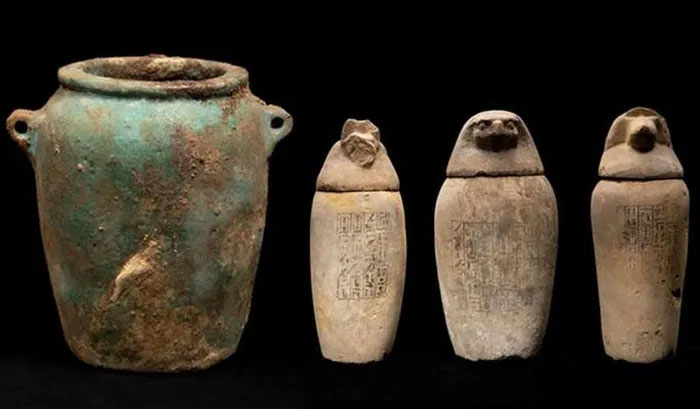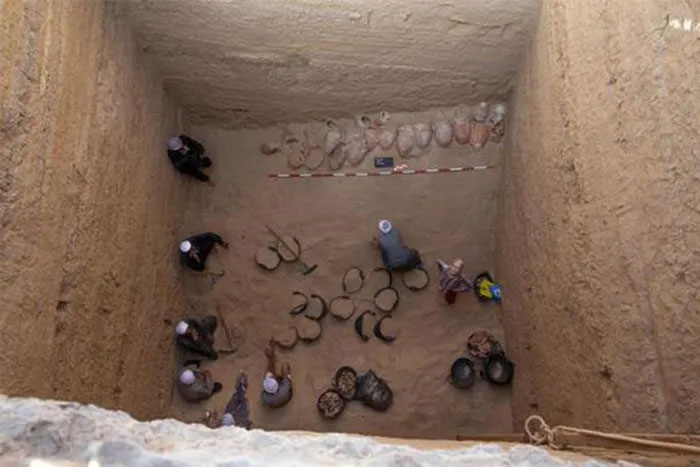Explore 2,600-year-old ancient wells: Where 'life after death' is created
Among a group of extremely large burial wells in the ancient cemetery of Abusir north of Saqqara (Cairo, Egypt), scientists have found a special ancient well containing artifacts that perfectly recreate the mummification process. the language of the ancient Egyptians.
It is a huge ancient well measuring 5.3x5.3 meters, about 14 meters deep. Inside, archaeologists found 370 large ceramic vessels, many of which contained leftover materials used in the mummification process, according to a statement from Egypt's Ministry of Antiquities.

Containers for embalming materials and limestone jars prepared for organs, but not in use
The archaeological team from the Czech Institute of Egyptology has been working in the area for 60 years and has made many invaluable discoveries before, but this new find is special because what is in this ancient well will help reveal revealed many mysteries surrounding the mummification technique that went into the myth of the Egyptians.
The ancient Egyptians believed that the soul would temporarily leave the body and re-enter the paradise of Osiris, the god of the afterlife. If the body is not preserved, it is not possible to reunite with the soul and so the dead cannot enter heaven.

Mysterious ancient well, a place where the dead are not buried, but used as a repository for items used for mummification
According to Ancient Origins, the vessels contained known mummifying materials such as salt and natron, and also contained a variety of unidentified dried herbs and flowers.
Therefore, scientists are planning to accurately analyze those mysterious materials, in the hope of perfectly recreating the ancient technique of mummification. According to the researchers, the Egyptian mummification technique is not a fixed process but is perfected over time, resulting in mummies with better durability and integrity.

Part of the ancient cemetery of Abusir, overlooking the two pyramids of Nyuserre and Neferirkare
Among these vases are 4 jars used to store organs, with their owner's name - Wahe Ip Ra - written in hieroglyphs but somehow still empty when found.
- Ancient wells over 600 years have never run out of water
- Discover ancient wells that have never run out of water
- China excavated hundreds of ancient wells over 2000 years old
- The mysterious couple died in an ancient stone age
- Discover ancient wells near Ho's citadel
- Wood wells discovered nearly 7,300 years old
- A nearly 900-year-old Cham well was discovered in Quang Nam
- Discover the oldest well in Europe
- The truth about inner wells: No one dares to drink water for fear!
- The mystery of life after death: There is no heaven, only infinite sadness and darkness
- What solution to have enough water for 9 billion people on Earth?
- An American scientist asserts that
 Discovered an ancient centipede fossil 99 million years old
Discovered an ancient centipede fossil 99 million years old Discovered bat-like dinosaurs in China
Discovered bat-like dinosaurs in China Discovered a 200-year-old bronze cannon of the coast
Discovered a 200-year-old bronze cannon of the coast Discover 305 million-year-old spider fossils
Discover 305 million-year-old spider fossils